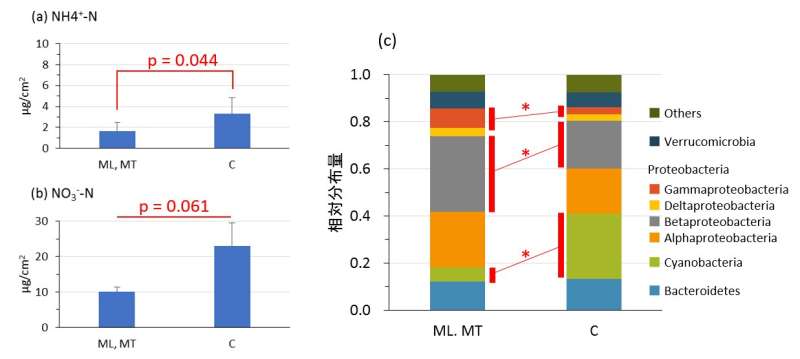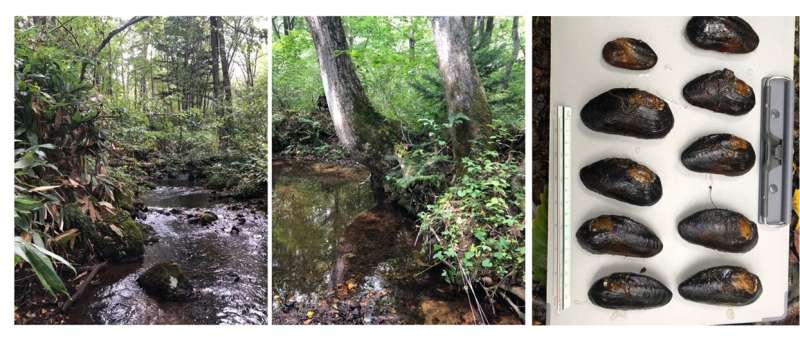Biofilm bacterial dynamics and changes in inorganic nitrogen density due to the presence of freshwater pearl mussels

Freshwater pearl mussels are found in rivers in Japan. They are in severe decline, however, and are on the endangered Red List designated by the Ministry of the Environment. Freshwater pearl mussels are known to play an important role in the biochemical ecosystem of river nutrients in the area and downstream. Kayano Takeuchi, graduated from the Faculty of Agriculture, Shinshu University, and her father Motoi Takeuchi, strived to collect water samples and biofilm from 14 rivers throughout Japan in order to study the species and the ecosystem non-invasively. They used ceramic tiles to collect biofilm and used next-generation sequencing of bacterial 16S rRNA gene amplicons of biofilms and analyzed the genomic DNA extracted from the samples, inorganic nitrogen compounds, and chlorophyll concentration.
The research group found that in rivers where the mussels were present, there was a significant difference in ammonia as well as nitrate in the biofilm compared to streams where no mussels were present. The bacteria belonging to Bacteroidales in Baceroidetes and Clostridiales in Firmicutes were predominantly found in the samples where the mussels were present. The mussels may help alleviate nitrogen deficiencies by playing a role in the distribution, storage, and recycling of nutrients. The mussel and no-mussel sites were similar in size and water chemistry.
Professor Yutaka Uyeno hopes that this study confirms the notion that all life's significance can be evidenced with quantitative, scientific devices. We still have much to learn about the role of biodeposits in nutrient dynamics. More intensive investigations are needed to clarify the link between freshwater pearl mussels and their ecosystems. Only in the rivers where the mussels are, were bacteria diverse.
The research was published in the journal, mSphere.

More information: Kayano Takeuchi et al, Biofilm Bacterial Dynamics and Changes in Inorganic Nitrogen Density Due to the Presence of Freshwater Pearl Mussels, mSphere (2022). DOI: 10.1128/msphere.00834-21
Provided by Shinshu University


















